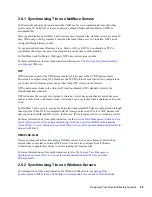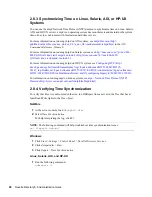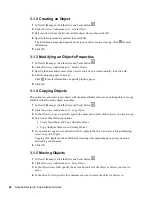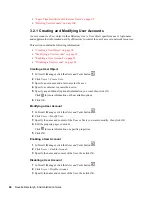
Designing Your Novell eDirectory Network
81
no
vd
ocx
(e
n)
6 Ap
ril 20
07
You can have only one master replica. Additional replicas must be read/write, read-only, or filtered.
Most replicas should be read/write. They can handle object viewing, object management, and user
login, just as the master replica can. They send out information for synchronization when a change is
made.
Read-only replicas cannot be written to. They allow object searching and viewing, and they are
updated when the replicas of the partition synchronize.
Do not depend on a subordinate reference or filtered replicas for fault tolerance. A subordinate
reference is a pointer and does not contain objects other than the partition root object. Filtered
replicas do not contain all objects within the partition.
eDirectory SP2 allows for an unlimited number of replicas per partition, but the amount of network
traffic increases as the number of replicas increase. Balance fault tolerance needs with network
performance needs.
You can store only one replica per partition on a server. A single server can store replicas of multiple
partitions.
Depending on your organization's disaster recovery plan, the major work of rebuilding the network
after a loss of a server or location can be done using partition replicas. If the location has only one
server, back up eDirectory SP2 regularly. (Some backup software does not back up eDirectory.)
Consider purchasing another server for fault tolerance replication.
2.4.3 Determining the Number of Replicas
The limiting factor in creating multiple replicas is the amount of processing time and traffic required
to synchronize them. When a change is made to an object, that change is communicated to all
replicas in the replica ring. The more replicas in a replica ring, the more communication is required
to synchronize changes. If replicas must synchronize across a WAN link, the time cost of
synchronization is greater.
If you plan partitions for many geographical sites, some servers will receive numerous subordinate
reference replicas. eDirectory SP2 can distribute these subordinate references among more servers if
you create regional partitions.
2.4.4 Replicating the Tree Partition
The Tree partition is the most important partition of the eDirectory tree. If the only replica of this
partition becomes corrupted, users will experience impaired functionality on the network until the
partition is repaired or the eDirectory SP2 tree is completely rebuilt. You will also not be able to
make any design changes involving the Tree.
When creating replicas of the Tree partition, balance the cost of synchronizing subordinate
references with the number of replicas of the Tree partition.
2.4.5 Replicating for Administration
Because partition changes originate only at the master replica, place master replicas on servers near
the network administrator in a central location. It might seem logical to keep masters at remote sites;
however, master replicas should be where the partition operations will occur.
Summary of Contents for EDIRECTORY 8.8 SP2
Page 4: ...novdocx en 6 April 2007...
Page 116: ...116 Novell eDirectory 8 8 Administration Guide novdocx en 6 April 2007...
Page 128: ...128 Novell eDirectory 8 8 Administration Guide novdocx en 6 April 2007...
Page 255: ...256 Novell eDirectory 8 8 Administration Guide novdocx en 6 April 2007...
Page 406: ...408 Novell eDirectory 8 8 Administration Guide novdocx en 6 April 2007...
Page 563: ...566 Novell eDirectory 8 8 Administration Guide novdocx en 6 April 2007...
Page 573: ...576 Novell eDirectory 8 8 Administration Guide novdocx en 6 April 2007...
Page 601: ...604 Novell eDirectory 8 8 Administration Guide novdocx en 6 April 2007...
















































